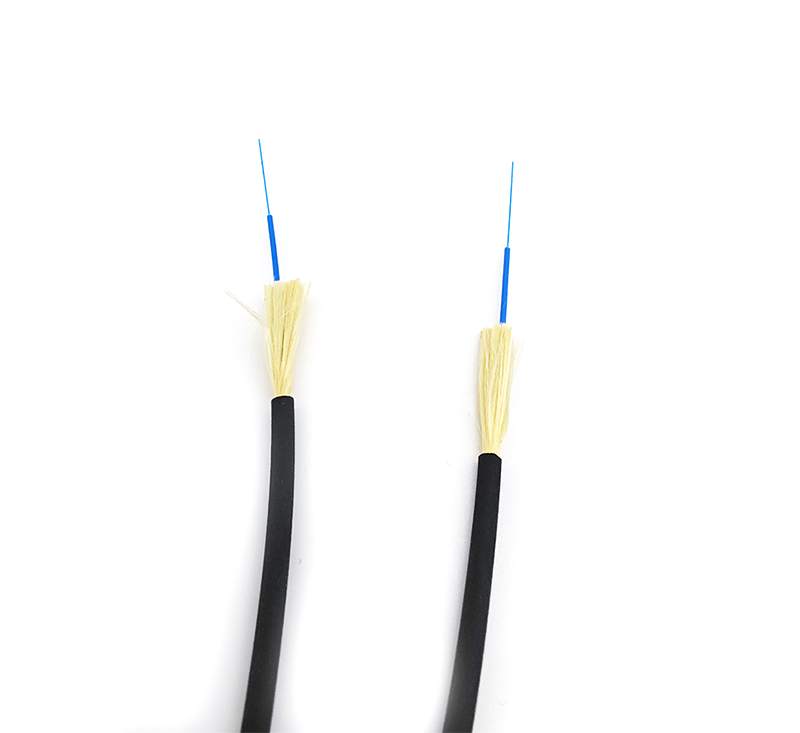Generally speaking, customers are not very familiar with optical cable technology, so it becomes more difficult to choose a suitable optical cable. Introduce several common methods of identifying the pros and cons of optical cables:
Outer sheath: Indoor optical cables are generally made of polyvinylidene or flame-retardant polyvinylidene. The appearance should be smooth, bright, flexible and easy to peel off. Inferior optical cables have poor finish and are easy to stick to tight sleeves and aramid fibers. The PE sheath of the outdoor optical cable should be made of high-quality black polyethylene. After the cable is formed, the outer sheath is flat, bright, uniform in thickness and free of air bubbles. The outer skin of inferior optical cable is generally produced with recycled materials. This kind of optical cable has a rough surface. Because there are many impurities in the raw material, if you look closely, you can find that the outer skin of the optical cable has many tiny pits, which will crack and seep after laying for a period of time.

2. Optical fiber: optical cable wholesale, regular optical cable manufacturers generally use A-grade fiber cores from large manufacturers, and some low-cost and low-quality optical cables usually use C-grade, D-grade optical fibers and smuggled optical fibers of unknown origin. If the fiber is long, it is often damp and discolored, and the multi-mode fiber is often mixed with single-mode fiber. Generally, small factories lack the necessary testing equipment and cannot judge the quality of the fiber. Since such optical fibers cannot be distinguished by the naked eye, the common problems encountered in construction are: narrow bandwidth and short transmission distance; uneven thickness, which cannot be connected to the pigtail; the optical fiber lacks flexibility and breaks when the fiber is coiled.
3. Reinforced steel wire: The steel wire of the outdoor optical cable of the regular manufacturer is phosphating, and the surface is gray. Such a steel wire will not increase the hydrogen loss after cabling, will not rust, and has high strength. Inferior optical cables are generally replaced by thin iron wires or aluminum wires, and the identification method is very easy - the appearance is white, and it can be bent at will when you hold it in your hand. The optical cable produced with such steel wire has a large hydrogen loss, and the two ends of the hanging optical fiber box will rust and break after a long time.
Fourth, steel armor: regular production enterprises use longitudinally wrapped steel strips with anti-rust paint on both sides, and inferior optical cables use ordinary iron sheets, usually only one side has been treated with anti-rust treatment.
5. Loose tube: The loose tube of the optical fiber in the optical cable should be made of PBT material, which has high strength, no deformation, and anti-aging. Inferior optical cables are usually made of PVC material.
6. Fiber paste: The fiber paste in the outdoor optical cable can prevent the optical fiber from oxidizing. Due to the entry of moisture and moisture, the fiber paste used in the inferior optical fiber is very small, which seriously affects the life of the optical fiber.
7. Aramid: Also known as Kevlar, it is a high-strength chemical fiber, which is currently most used in the military industry. Military helmets and bulletproof vests are produced from this material. At present, only DuPont and Aksu in the Netherlands can produce it, and the price is about 300,000 tons. Both indoor optical cables and power overhead optical cables (ADSS) use aramid yarns as reinforcements. Due to the high cost of aramid fibers, the outer diameter of inferior indoor optical cables is generally made very thin, which can save costs by reducing a few strands of aramid fiber. The fiber optic cable is easily broken when passing through the tube. ADSS optical cable is to determine the number of strands of aramid fiber in the optical cable according to the site span and wind speed per second. Be sure to check and confirm carefully before construction.










